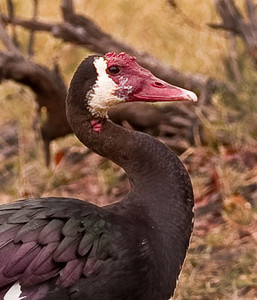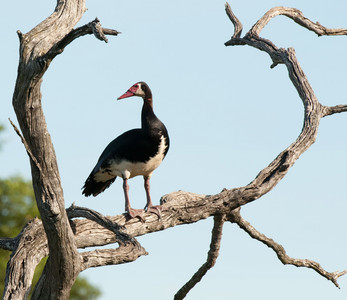
Egyptian Goose (F) & Chicks
Egyptian Goose (F) & Chicks: The female takes her 5 ducklings for a swim (L)--and into the tall grass when she sees us. [Botswana].
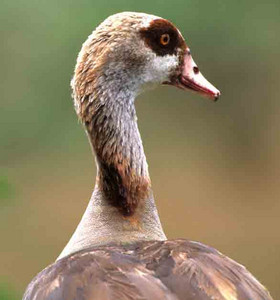
Egyptian Goose
Egyptian Goose female portrait. She lacks the colorfull tail feathers of the male. She is a drab brown color, probably a much better camouflage for her chicks and herself. [Samburu NP, Kenya];
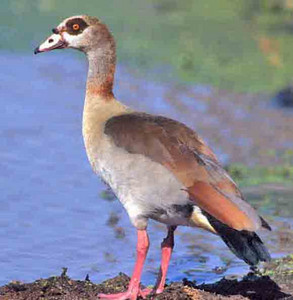
Egyptian Goose-(M)
An Egyptian Goose male, showing the color in his primaries, tail & neck. They would be even brighter if he were in breeding season [Khwai, Moremi NP, Botswana];

Egyptian Goose-m,f, +6 chicks
A pair of Egyptian Geese with their brood of 6 chicks walking along the water's edge in the early evening [Manyara, Tanzania].
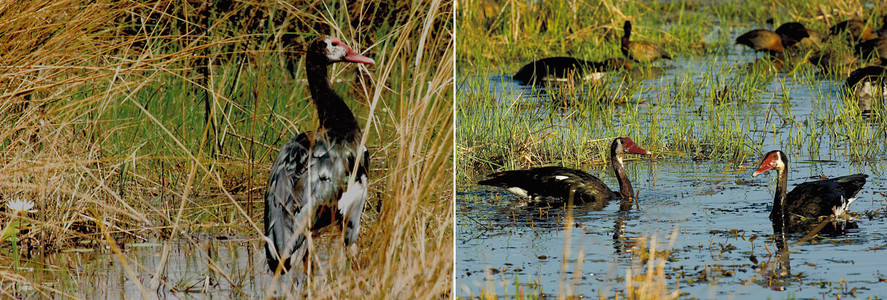
Spur-Winged Goose
A Spur-Winged Goose is actually a duck, but it is the largest of the african waterfowl, weighing as much as 20 pouinds. It is very shy, especially during the moult. It gets its name from a spur (both sexes) located at the wing-bend ('knee').They can be seen solitary, in small groups, or in very large packs, in ponds and flooded grasslands. Their diet is grass shoots, grain, seed, and plants. [Botswana].
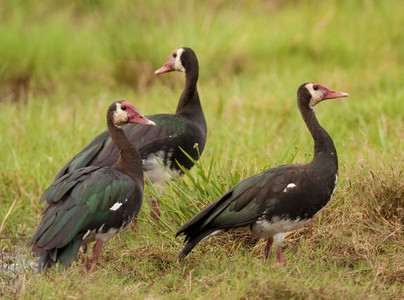
Spurwinged Geese
The two Spurwinged Geese in the front are the mature birds. The one on the left has the roughened red skin on its head, denoting a male. The one in the back is a female, as is the one in the R foreground. [Botswana].
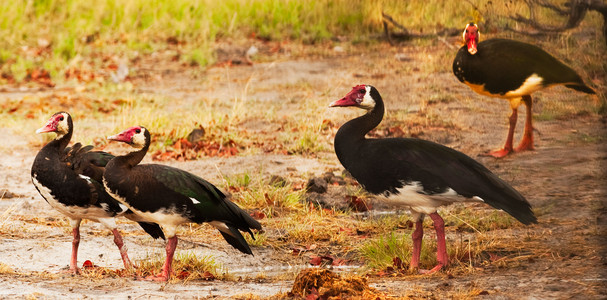
Spurwinged Geese
A family of Spur-Winged Geese: a male is in the R front. The roughened skin on his forehead and head is readily seen. An adult female is behind him (note the smooth forehead). The two on the left front are subadults. [Botswana '09].
